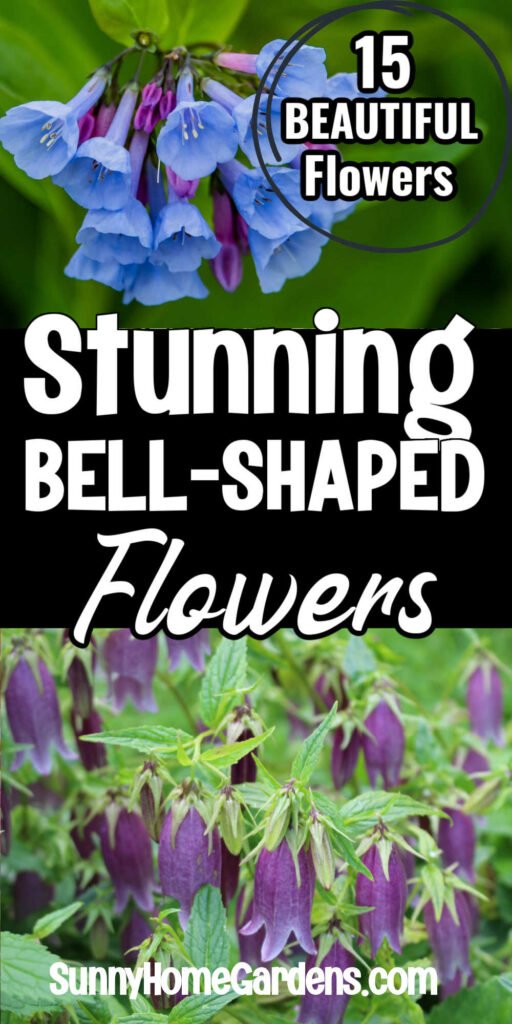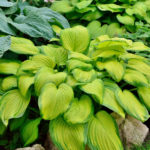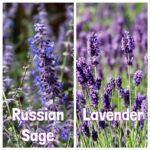15 Beautiful Bell-shaped flowers to consider for your garden this spring. These flowers will add interest and color to your garden.
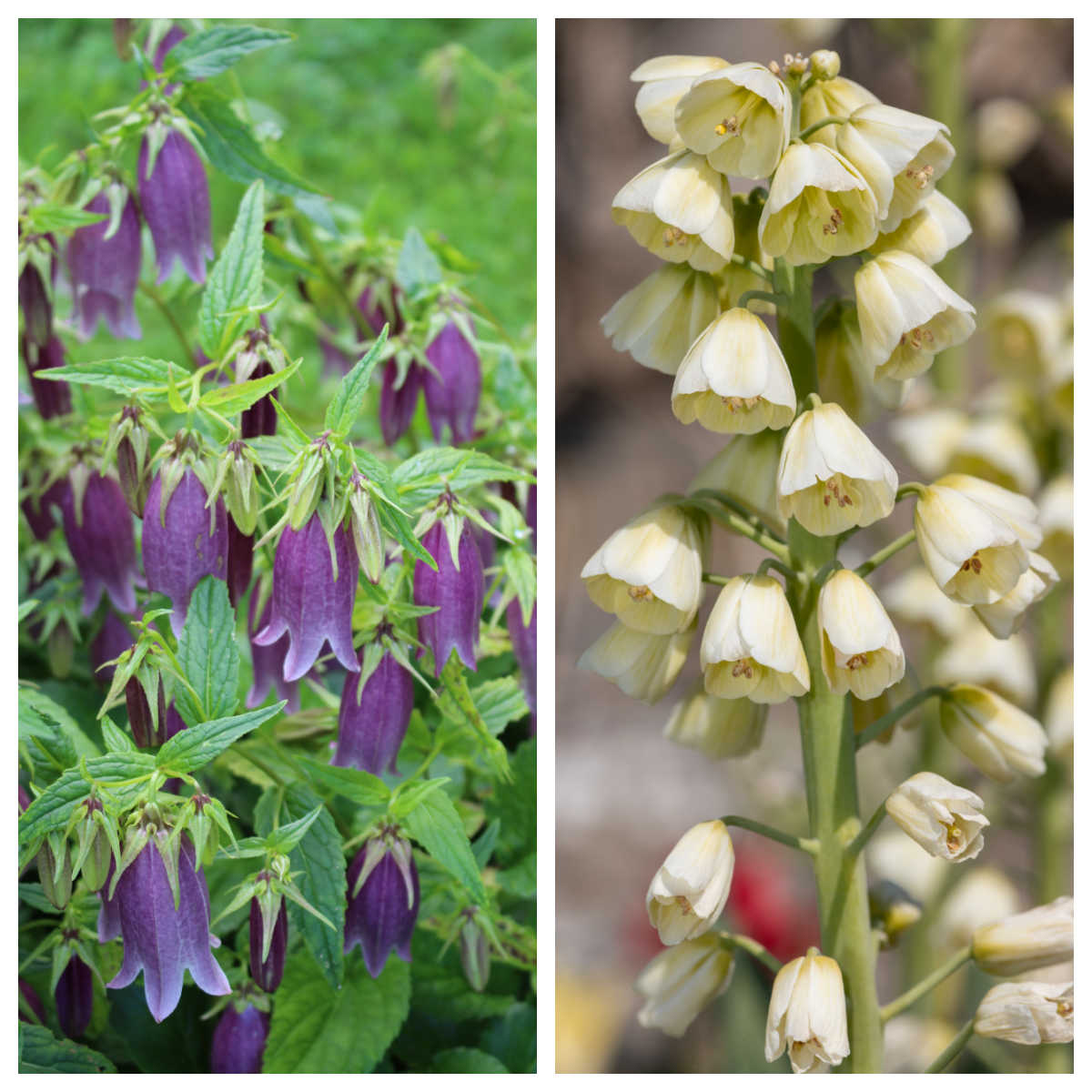
Beautiful, floral gardens are a form of art. Designing and creating a delightful, colorful, and vibrant garden requires not only brushing up on the gardening skills, but also paying attention to the small details that will bring major improvements to the overall look of your garden.
Deep-diving in the world of mix-and-match floral variants and getting familiar with the wide variety of flowers will allow you to bring new textures and colors to your garden as well as new, dreamy, fairy-like vibes.
Speaking of tiny details that make a huge difference, we must talk about the beautiful bell-shaped flowers!
From tiny and delicate, to gigantic and luxurious, the bell-shaped flowers interspersed in flower gardens will make it look more professionally done and delightful!
Knowing this, we have compiled a list of 15 beautiful, bell-shaped flowers worth considering for your flower garden; don’t worry, we have also included all the little key details you need to know about each of them:
Table of Contents
1. Foxglove Flowers (Digitalis Genus) – The Timeless Beauties
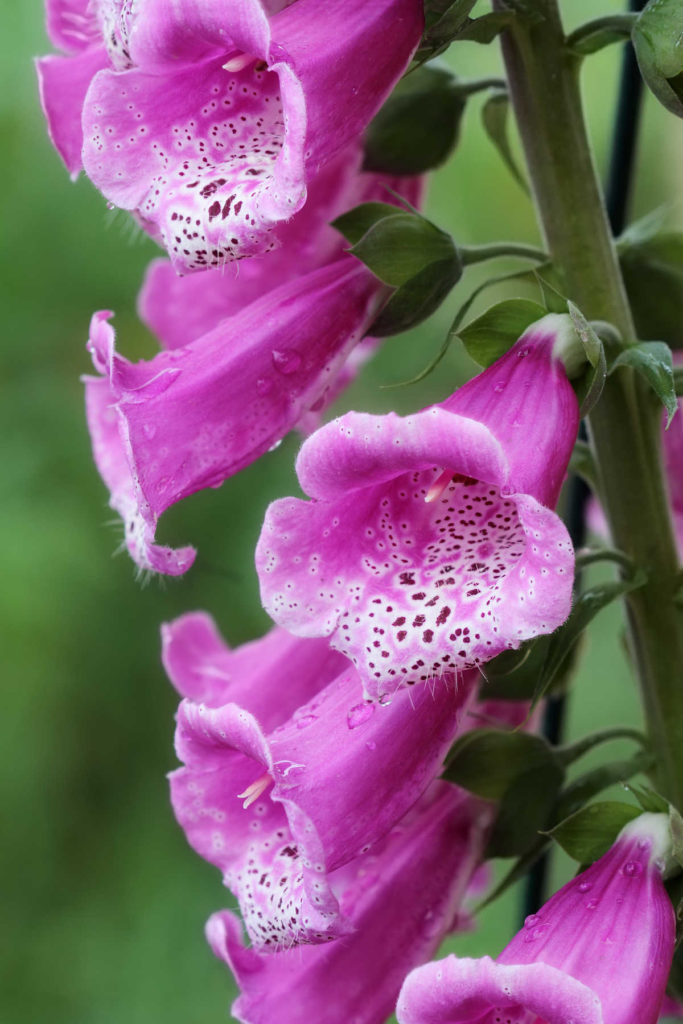
The foxglove flowers are one of the most recognizable bell-shaped flowers due to their look: they have a tall spike covered in numerous, tube-shaped flowers mostly in purple or pinkish shades (rarely in white or yellow shades) with tiny spots of other color hues (mostly yellowish and brownish) sprinkled in lower parts of the bell.
Uniquely beautiful, these perennial and biennial plants are one of the gardener’s favorites!
Interesting fact: The foxgloves are deer-resistant as they are poisonous to touch (always wear gloves when handling them!) so deer avoid them. Many gardeners use this fact to their advantage and plant the foxgloves next to more deer-friendly flowers to act as deer repellants and to beautify their gardens at the same time.
Details worth knowing:
Grow in Zone: 4 – 9;
Sun: full sun;
Water & soil: require regular watering to moist the loamy soil.
Toxicity: toxic; considered poisonous to touch for pets and humans. You may not necessarily experience a reaction, but you can transfer the toxins to your eyes, mouth, or wound; therefore, you should always wear gloves when handling foxgloves.
2. Canterbury Bells (Campanula Medium) – The Big & Dramatic Flowers
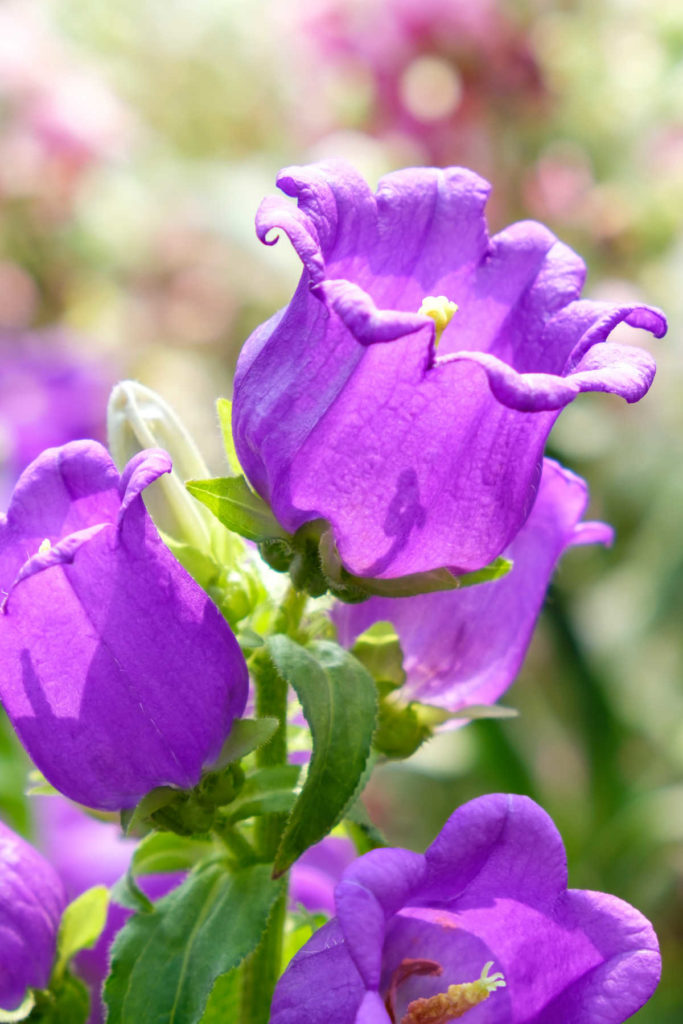
Canterbury bells form large clusters of bell-shaped flowers, known as an inflorescence.
Representing gratitude, faith, and constancy, these lovely purple bell shaped flowers mostly come in purple hues but sometimes can be found in white and pink shades as well.
Due to their unique look and size, they are ideal for adding a dramatic look to your garden!
Interesting fact: their flowers last for a long time attracting bees and butterflies.
Details worth knowing:
Grow in Zone: 4 – 10;
Sun: Full to partial sun;
Water & soil: require regular watering to moist the well-draining soil.
Toxicity: non-toxic; considered not poisonous for people or pets.
3. Bluebells or English bluebells (Hyacinthoides non-scripta) – The Pretty & Petite Flowers
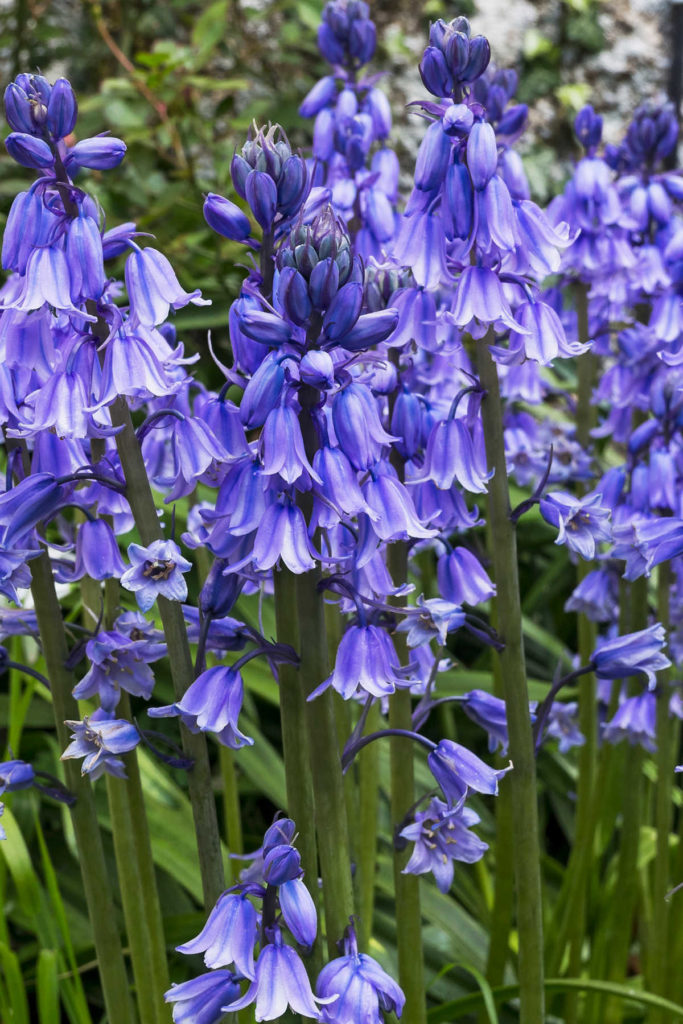
Bluebells, also known as English bells, have flowers in an elegant simple shape that is highly appealing to the eye.
These beautiful, petite flowers, although oftentimes referred to as common bluebells, are anything but common and ordinary; their downward-dropping, blue-purplish flowers sitting pretty on the arching stem exude elegance and fit so nicely in almost any garden.
Interesting fact: The bluebells are relatively small, which makes them ideal for the lower parts of shaded, woodland gardens.
Details worth knowing:
Grow in Zone: 4 – 9;
Sun: Partial sun;
Water & soil: require regular watering but make sure the soil (which can be loamy, clay, chalky or sandy) is well-draining and completely dry before watering to avoid root rotting.
Toxicity: toxic; contain toxic glycosides which can be poisonous to humans, pets, and animals in general!
4. Lily of The Valley (Convallaria Majalis) – The Nice-Fragrant, Spot-me-on-the-ground Flower
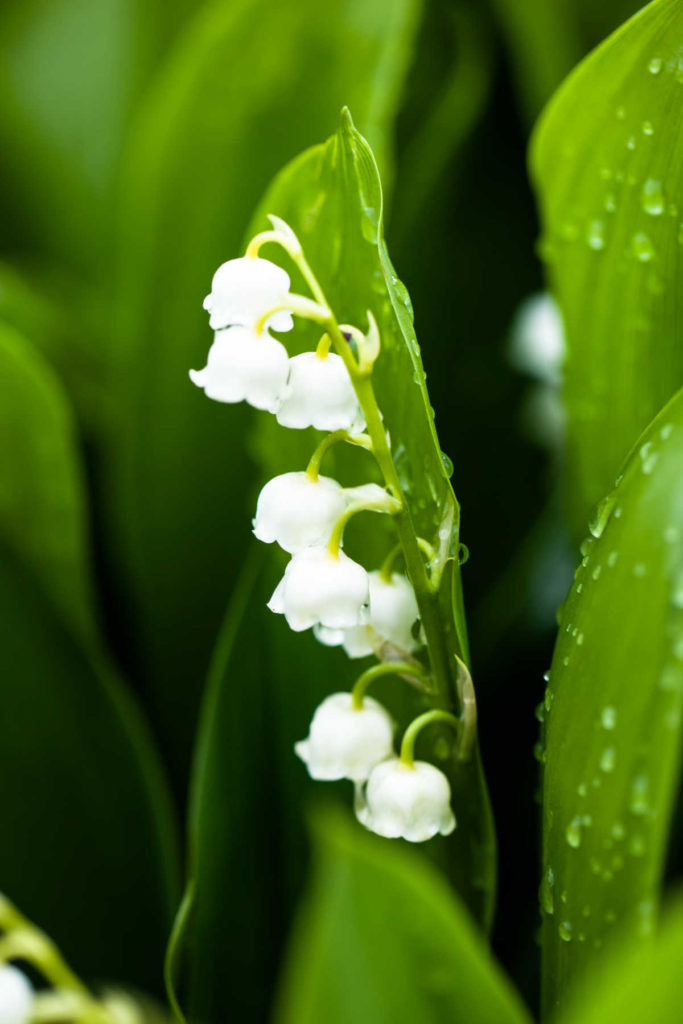
Lily of the Valley flowers are proof that beauty does come in small packages!
These tiny beauties are another classical bell-shaped flower worth considering!
Being a woodland flowering plant, easy to care for and a relatively pest-resistant type, Lily of the valley is ideal for the shaded areas under the trees.
Their tiny white flowers will win you over with their heavy and heavenly sweet fragrance and their timeless white beauty.
Interesting fact: despite their common name being “lily of the valley” these are not a type of lily, but they are related to asparagus. But please don’t try to eat them, they are toxic.
Details worth knowing:
Grow in Zone: 3-7;
Sun: Partial sun;
Water & soil: require regular watering of the loamy, sandy soil.
Toxicity: toxic; contain toxins which can be fatal if ingested by children or pets, and animals in general.
5. Coral Bells (Genus Heuchera) – Pretty-in-pink Flowers
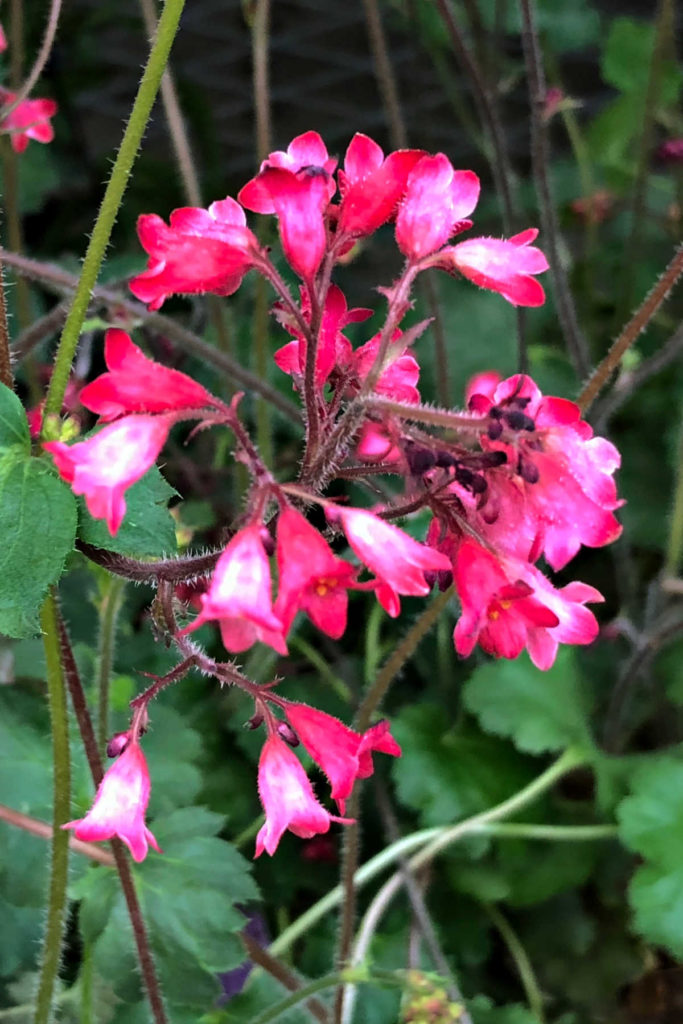
Coral bells, or “alumroot” as they are also known, are ideal for enriching the diversity of your garden.
Despite their name, “coral” is not the only shade they have. On the contrary, they can be found in various shades, ranging from white to rich pink, amber even purple.
Queens of diversity and uniqueness, these bell flowers are not symmetrical, like most of the other bell-shaped flowers we mentioned so far; instead, they have panicles of small blooms that grow on the sturdy, wire stems; this further makes them ideal cut flowers for bouquets.
Interesting fact: Not only do these lovely bell-shaped flowers adapt easily to various exposures, but they bloom reliably. Different varieties grow well in sun, partial shade, or even full shade.
Details worth knowing:
Grow in Zone: 4 – 9 (depending on variety);
Sun: Full, partial even shade depending on variety;
Water & soil: require regular watering to keep the soil moist; water more if they are in full sun, and make sure the soil is rich and well-drained.
Toxicity: non-toxic and non-poisonous to people and animals.
6. Snake Head Fritillary (Fritillaria meleagris) – The Edgy Bell-shaped Flower
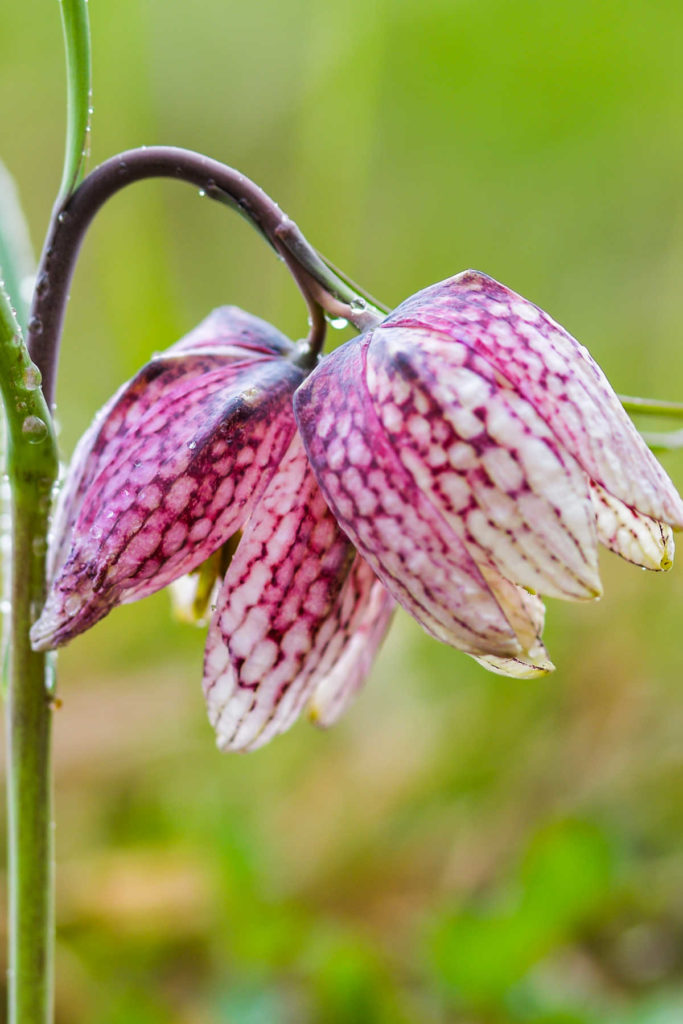
Warn the family not to be scared when your snake head fritillary flowers first start to appear as they resemble a snake’s head a bit too much, hence their name!
Not to worry, once they grow, they open into remarkably beautiful, unique bell-shaped flowers.
Interesting fact: The snake head fritillary flowers have an interesting checked pattern that gives off their edgy vibes. These lovely flowers can be found in various shades of white, burgundy, and purple. They are also deer-resistant.
Details worth knowing:
Grow in Zone: 3-8;
Sun: partial sun or full shade;
Water & soil: require free-draining soil and it is best to be around deciduous shrubs which will take up the excess moisture as they do not fan or too much water.
Toxicity: toxic, contain Imperialine, Tulipalin A, and Tuliposide A which can damage people’s and pets’ organs if digested.
7. White Mountain Heather (Cassiope Mertensiana) – Easy-to-spot White Beauties
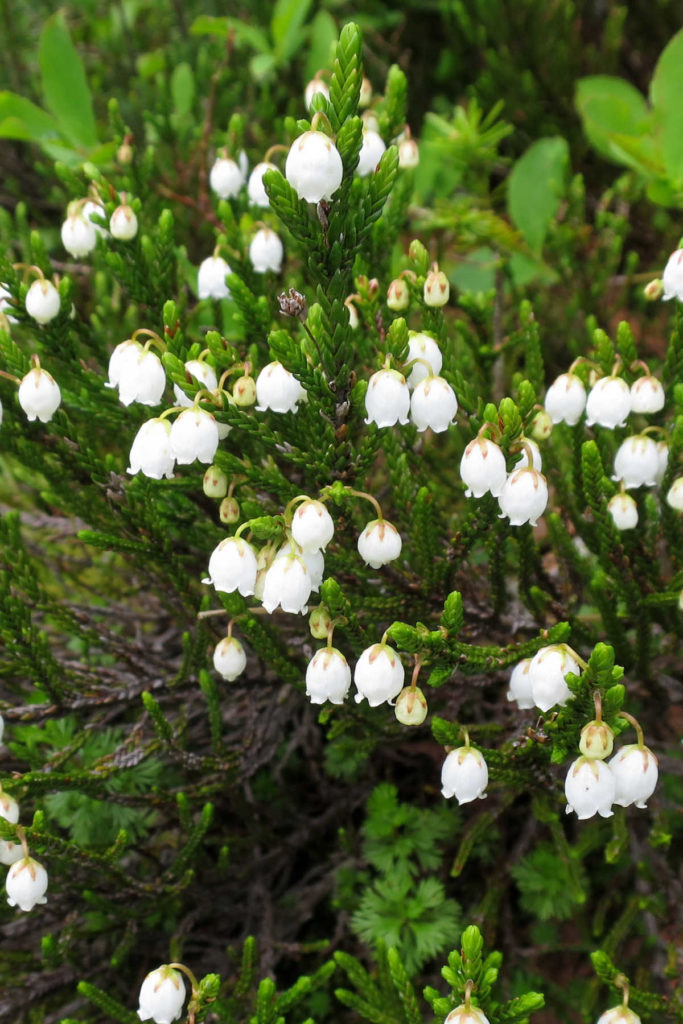
One of the most identifiable of the four mountain-heather species, the white mountain heather has pure white, easy-to-spot, bell-shaped flowers that hang down effortlessly from their red stalks.
Ideal for planting in most around-the-rock spots, this low-growing wildflowers symbolize protection, luck, and wishes coming true.
Interesting fact: the white mountain heather is considered a rare plant except in some places. A large number of people do believe that they bring luck, in the same way, that four-leaf clovers are believed to bring Celts luck.
Details worth knowing:
Grow in Zone: 3-8;
Sun: Full Sun, Part Shade, Full Shade (depending on variant);
Water & soil: regular watering to maintain moist, well-drained (and rich!) soil, best to be around rocks and places of late snow, add more if they are in full sun.
Toxicity: toxic;
8. Virginia Bluebells (Mertensia virginica) – The Pretty Flowers
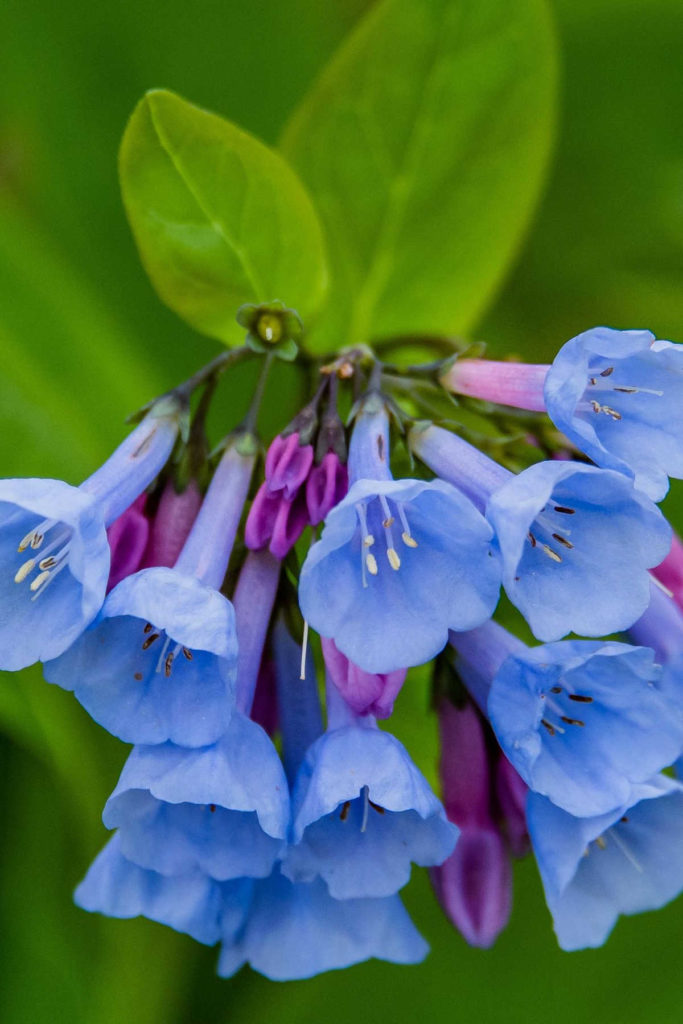
If you are a fan of bluebells, you will love the Virginia bluebells as well.
Do not let the name confuse you, these two flowers, although similar in appearance and name are completely unrelated.
They are adored by bees and butterflies, but rabbits and deer are not typically their fans, which makes them ideal for gardens and flower beds. The blue flowers are a light, powder blue that is not seen often in nature.
Interesting fact: when the flowers first appear they have a pink color, but as they grow and bloom, gradually they gain their striking blue–purplish color. Only occasionally do they flower in white or pink.
Details worth knowing:
Grow in Zone: 3-8;
Sun: Full to partial sun;
Water & soil: regular watering to maintain moist (and rich!) soil, add more if they are in full sun.
Toxicity: no toxic effects were reported; even though they aren’t considered toxic, they shouldn’t be digested.
9. Persian Lilies (Fritillaria persica) – The Dark Beauties
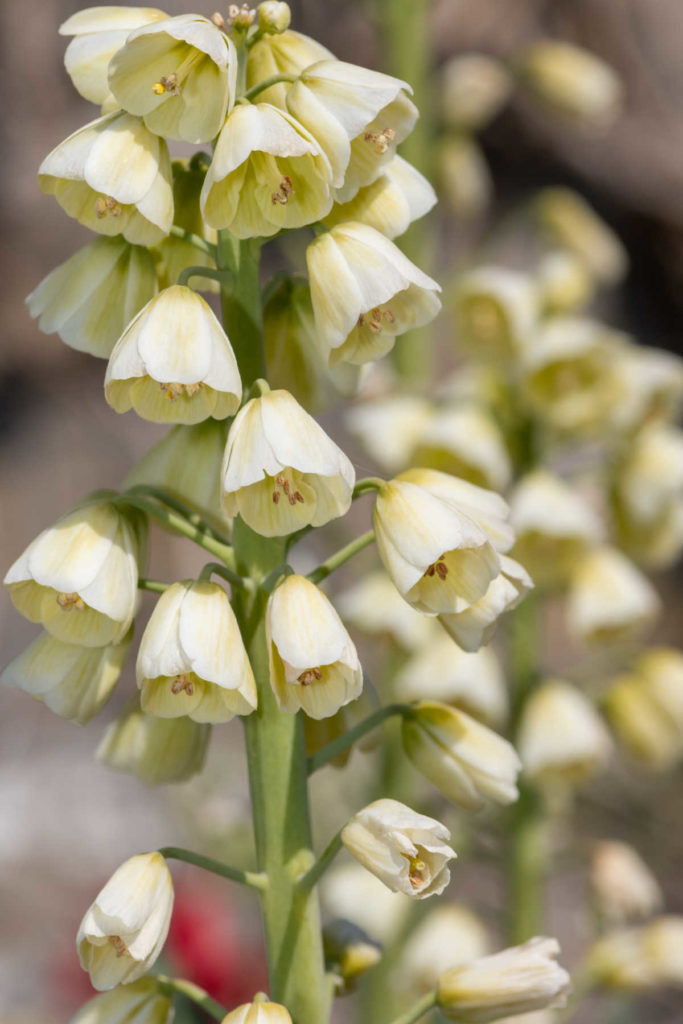
Persian Lilies are tall, unusual, and strikingly beautiful.
One will not be able to pass by without noticing these deeper, darker beauties.
Although Persian lilies come in ivory, most of the colors that Persian Lilies come in is much darker than the typical pastel colors other bell like flowers come in.
Much like their lily siblings, they are also deer and rabbit resistant.
Interesting fact: One mature stalk can have as many as 30 delicate flowers in colors ranging from ivory or green to deep red and purple, gently drooping downwards.
Details worth knowing:
Grow in Zone: 4-8;
Sun: full sun;
Water & soil: regular watering in an average amount on their chalky, loamy, or sandy soil.
Toxicity: the entire plant is toxic to humans and pets.
10. Grape Hyacinths (Muscari) – The Gentle & Delicate Flower
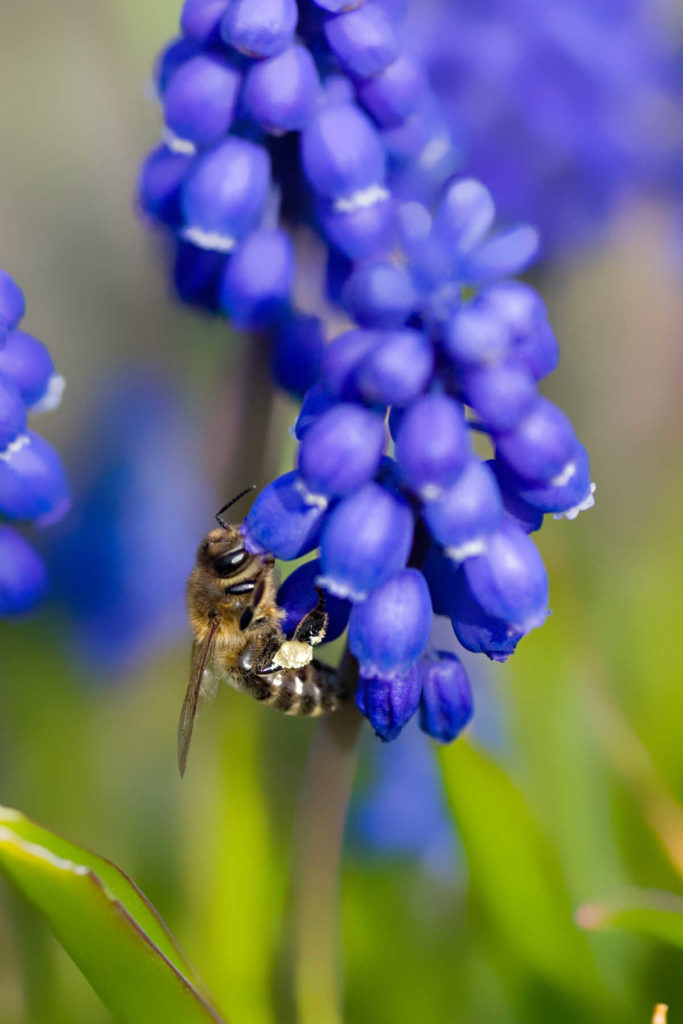
Do you love Lily of the Valley? You will love their relative the Grape Hyacinth even more!`
A popular companion flower for daffodils and one of the favorite choices amongst gardeners, this lilac-colored flower has tiny flowers which resemble more of a rounded bell or grape, hence its name!
Interesting fact: even though it is called hyacinth, this flower is not technically related to the family of hyacinths, but belongs to the asparagus family, just like the Lilly of the Valley.
Details worth knowing:
Grow in Zone: 4-8;
Sun: Full to partial sun;
Water & soil: regular watering to keep it moist early in the season, less watering of the sandy soil in later days of the season.
Toxicity: non-poisonous.
11. Fuchsia (Fuchsia magellanica) – The Dancing Queen
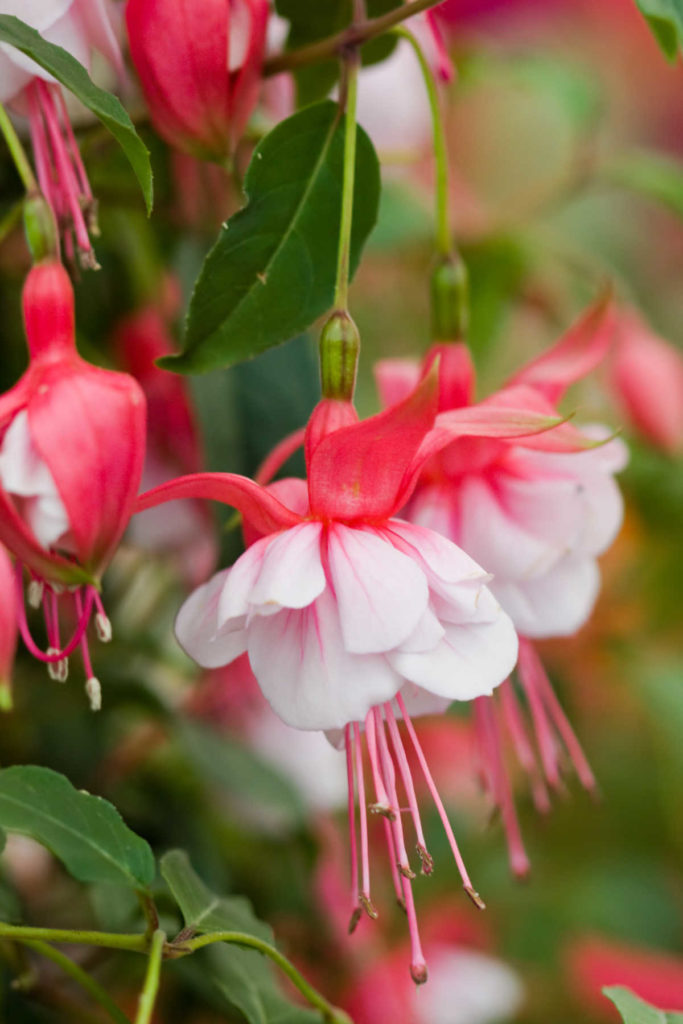
Only a few flowers can match the beauty of the Fuchsia’s bell-shaped flowers which highly resembles a tiny ballerina dancing in a pretty pink (or white, red, purple) dress!
The great thing about these stunning flowers is that they are ideal for hanging baskets as well.
Interesting fact: Fuchsia flowers can annually grow in areas with cold, frosty winters as well, as they prefer cooler temperatures (below up to 40F, cease to bloom after 80F; ideally between 60-70F), but to prevent frost you can take them indoors when it gets too cold!
Details worth knowing:
Grow in Zone: 6-7;
Sun: partial sun to partial shade;
Water & soil: regular watering in any fertile, moist, and well-drained soil.
Toxicity: non-poisonous.
12. Korean Bellflower (Campanula Takesimana) – The Easy-to-maintain Flower
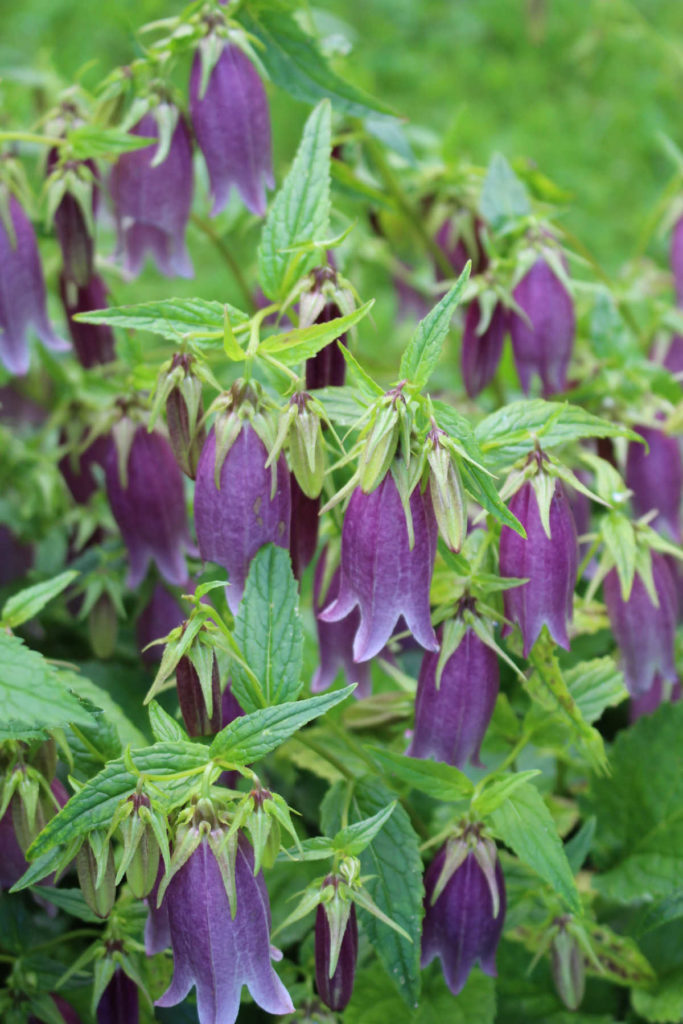
Korean Bellflowers are known for being low-maintenance flowers that spread easily and are ideal for beginners!
Originating from Korea as their name suggests, they come in shades of white, pink, and purple flowers and are an instant eye-catcher. Although they spread easily, they are not too aggressive in their spreading, so you don’t have to worry about that!
Interesting fact: Dropping downward and being longer and thinner, the Korean Bellflowers are easily distinguished from their relatives the Canterbury bells.
Details worth knowing:
Grow in Zone: 4-8;
Sun: Full to partial sun;
Water & soil: regular average watering in any chalk, loamy or sandy, well-drained soil.
Toxicity: non-poisonous.
13. Twinflowers (Linnaea Borealis) – Good Things Come in Two!
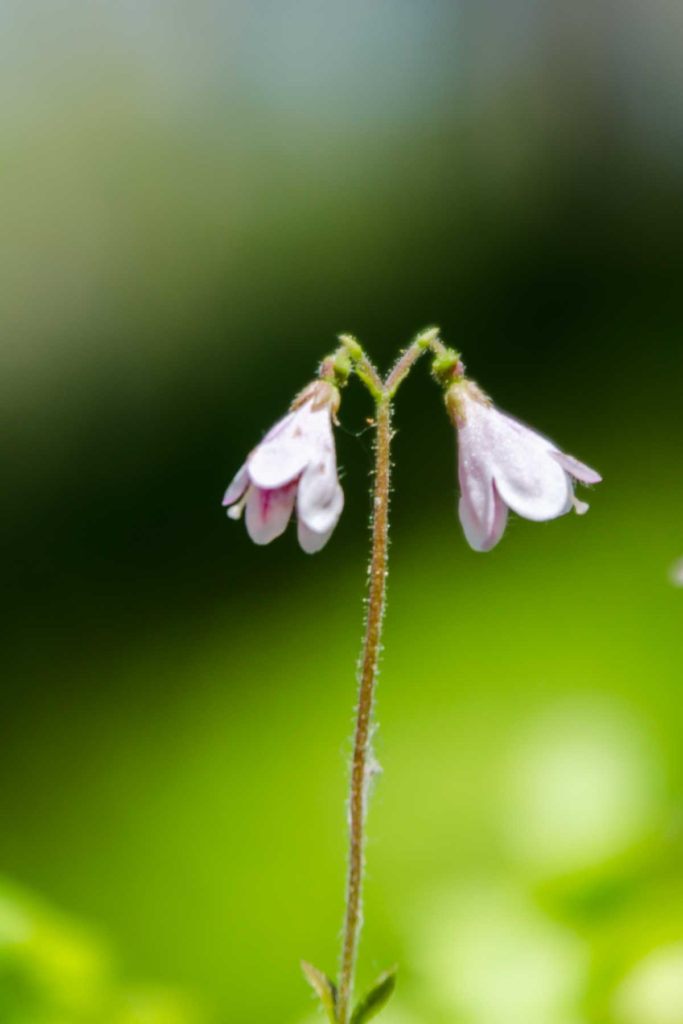
The lovely bell-shaped flowers of the twinflowers highly resembling ball-gowns are members of the honeysuckle family and their sweet, pleasing scent is offered to anyone willing to get down on their level.
Interesting fact: The name “Twinflower” comes from the distinctive way of growing: each stem has a pair of “twin” flowers that grow drooping downward in opposing directions! Isn’t that sweet?
Details worth knowing:
Grow in Zone: 3-7;
Sun: Full to partial sun or full shade;
Water & soil: regular watering to keep the acidic and well-drained soil moist.
Toxicity: unknown.
14. Penstemon – Beardtongues (penstemon genus) – The Variety Queen
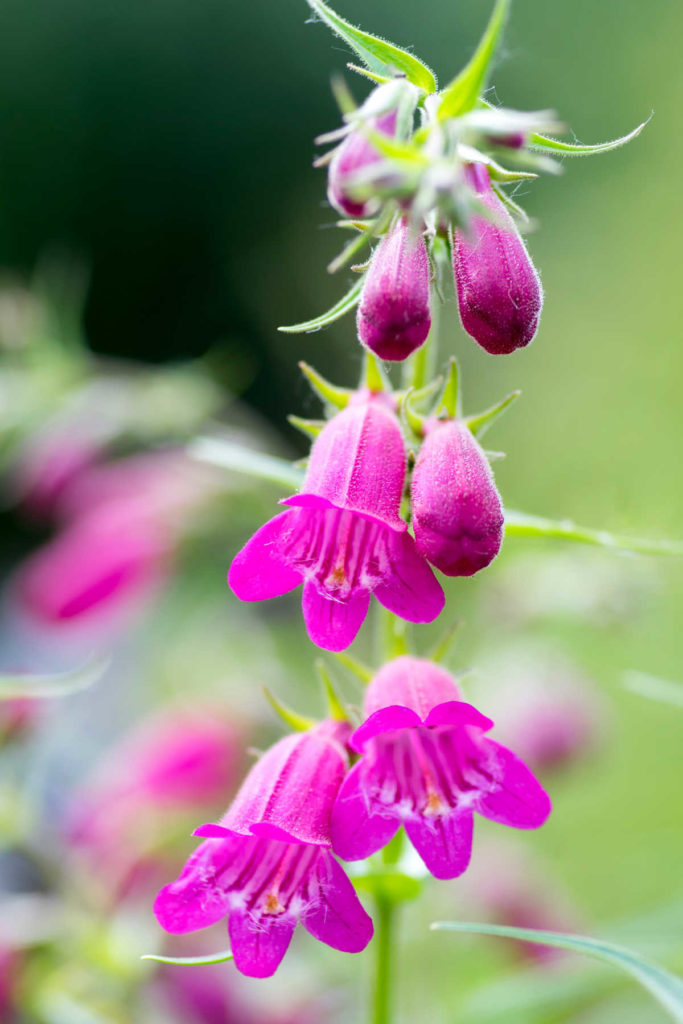
With over 250 species and 800 cultivars there are plenty of varieties of Penstemon, hence our nickname for them being the variety Queen.
Typically, the Penstemon Flowers grow on tall stems, are medium-large themselves and are available in numerous colors and shapes.
Interesting fact: most of the Penstemon flower variants are drought-tolerant which makes them ideal for drier climates!
Details worth knowing:
Grow in Zone: 3-9;
Sun: full sun;
Water & soil: regular watering to keep the well-drained soil moist but not too wet.
Toxicity: Although it is not listed on the ASPA guide to toxic and non-toxic plants, the information that Penstemon accumulates Selenium is not a good sign and because of this it is wise to keep it away from pets.
15. Tulips (Tulipa Genus) – The Most Famous Bell-shaped Flower
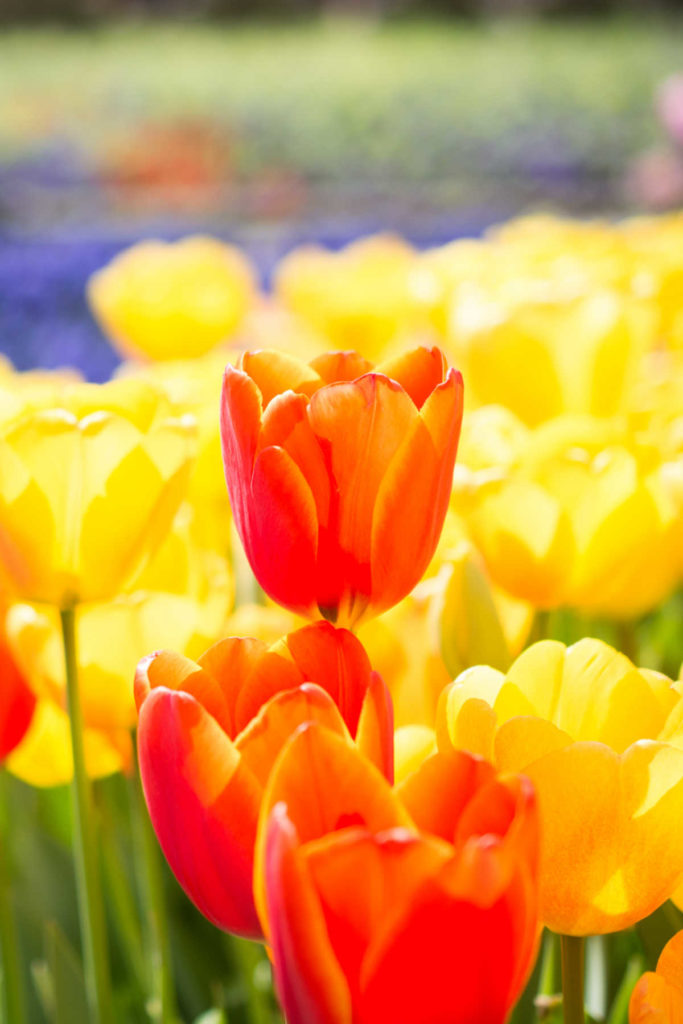
We can’t complete our lists without mentioning the vastly popular and most well-known Queen of all Bell-shaped Flowers, the Tulips. These flowers bloom in early spring.
Pointing directly upward, like a crown, instead of the usual downward drooping, the Tulipa genus contains around 75 species but there are thousands of varieties of cultivars in spectacular colors you can enjoy!
Interesting fact: The name ‘Tulip’ originated from the Persian word ‘delband’ meaning turban, which is given because of the flowers’ turban-like shape.
Details worth knowing:
Grow in Zone: 3-8;
Sun: Full to partial sun;
Water & soil: regular average watering to keep the well-drained, loose soil moist but not too wet.
Toxicity: Toxic to cats and pets;
Which one is your favorite to add to your garden this year?


